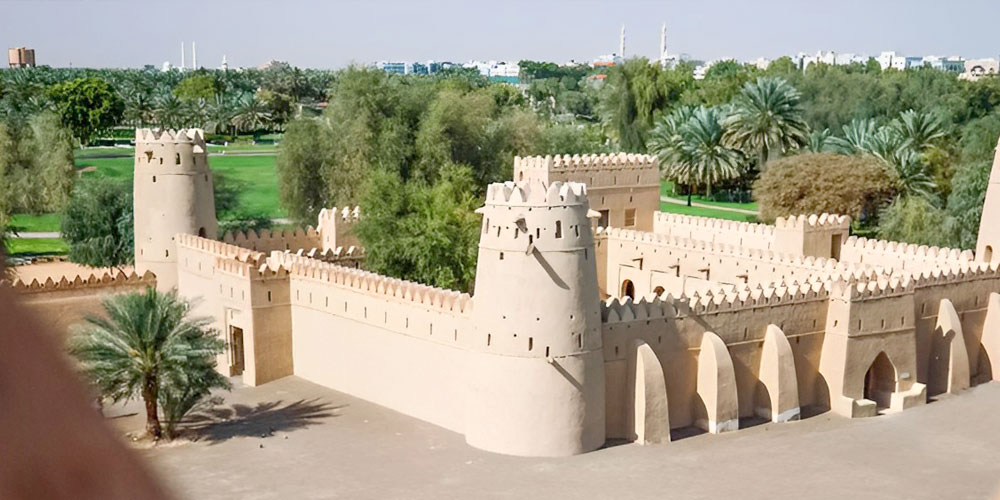Al Jahili Fort
ID:
1
Al Jahili Fort, one of the largest forts in the United Arab Emirates, was built in the late 19th century by Sheikh Zayed bin Khalifa the First (r. 1855-1909), both as a symbol of power and as a royal summer residence. The original fort consisted of a square fortified enclosure and a distinctive four-storey circular tower.
HISTORY
At the end of the 19th century, the Emirate of Abu Dhabi was ruled by Sheikh Zayed bin Khalifa, leader of the Bani Yas tribe and head of the Al Falah family. During summer, Abu Dhabi’s rulers left the intense humidity of the coast for the more temperate weather of Al Ain, with its low humidity, fertile land and fresh water.
Sheikh Zayed owned a farm in Al Ain, and he ordered construction of Al Jahili Fort to control the tribes who lived in the area. He also would use the fort as his summer residence. Work on the fort began in 1891 but it was not completed until 1898.
When Sheikh Zayed died, his eldest son, Sheikh Khalifa bin Zayed died, chose not to become ruler of Abu Dhabi and instead remained in Al Ain. He lived in the fort with his family. Al Jahili’s history over the next 30 years is unclear, but at some point, the fort was abandoned and fell into disrepair.
In the early 1950s, British forces came to Al Ain and incorporated the fort into a larger enclosure that formed their regional headquarters. Barracks and other buildings were added to the compound. This military use of the tower continued until around 1970.
In 1985, early restoration work was done on the fort, while in 2007-2008, the fort underwent a major rehabilitation project. A visitor information centre, permanent exhibition space devoted to the explorer and photograph Wilfred Thesiger, and a temporary exhibition space were added.
FORT STRUCTURE
The original components of Al Jahili Fort include a square high-walled fort and a separate round tower composed of four consecutively rising and narrowing concentric tiers. Today, the fort has cylindrical towers at three of its corners, while in the fourth is the sheikh’s majlis, or reception area, where he entertained guests and conducted official business.
The inscription over the main entrance reads:
A door of goodness is opened in glory’s chapter,
Where joy and happiness with high glory reside,
The blessings of honour said “Mark this house,
A house of high standing built by Zayed bin Khalifa.”


